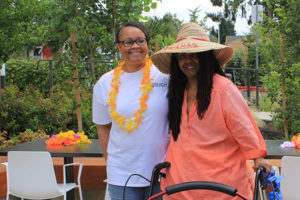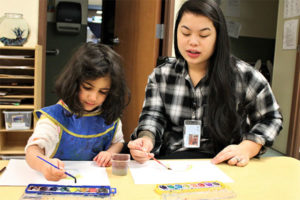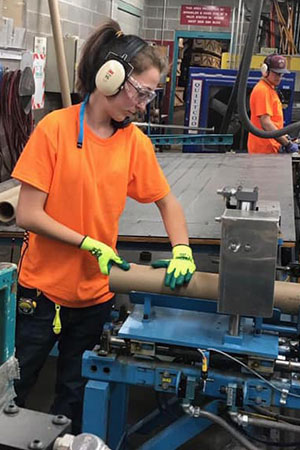I’ve always had a sneaking suspicion that “walking a mile in someone else’s shoes” does very little to reveal what’s afoot in another person’s life. For that, we need to start gathering feedback.
Yet, to this day, I can hear my third-grade teacher Ms. Agena explaining empathy by asking me to put myself in my classmates’ shoes. This technique develops our social skills, but it’s not effective at uncovering the actual motives or feelings of others.
When you think about it, each of us interprets the world through a host of complex traits. We have our own life experiences, personalities, demographics and cognitive biases. So, it’s no surprise that a detailed study found that asking someone is the most accurate way to understand their thoughts or feelings.
Not an earth-shattering idea, I know. However, we sometimes overlook the crucial step of gathering feedback before analyzing and designing programs. Looking to experts for knowledge and guidance is valuable, but including the voices of those most affected is imperative. Doing so creates human-centered solutions, rooted in the day-to-day experiences of those we serve.
Constructing loops to gather feedback
In recent years, we’ve seen organizations valuing these voices even more. Local nonprofits are gathering feedback through conversations and surveys in an effort to improve programs.
REACH Community Development, a local affordable apartment developer, is one of these organizations. Its Isabella Court project provides affordable housing with a focus on centering resident voices. The latter is a huge benefit for the many seniors and families that call Isabella home.

For REACH, inclusion starts at the ground level. Both buildings provide space for resident connections through community rooms and outdoor areas. REACH also employs people like Clara Johnson, Isabella Court’s resident services coordinator. Johnson serves as confidant and advisor for her neighbors. Among other things, she organizes monthly meetups, like Coffee Connection. These gatherings allow residents to build relationships and foster ideas for original and authentic programming. Johnson said the events provide an outlet for everyone, even residents who are reluctant to leave home.
“We were decorating for Halloween last month and people were coming up with a ton of great ideas,” Johnson said. “Now, one of the seniors wants to do a puppet show for families and another wants to start a book club.”
In addition, REACH is gathering feedback through annual resident surveys. It gives residents an active voice in shaping on-site services. Together, they create useful services that span from food assistance to financial education
This focus on residents transfers all the way to the top of the organization. Two residents currently hold seats on the REACH board of directors, which is a feature of its by-laws. In total, at least one-third of its board must represent the low-income community.
Learning where they are
In some cases, asking someone what they need is impossible or unrealistic. As a provider of high-quality services for children, families, and adults with disabilities or other challenges, Innovative Services NW has a lot of experience with these situations.

Students enrolled in its Early Learning & Child Care Program are still learning about their feelings and independence. As a result, parents and guardians serve as their voices. Oftentimes these caretakers come to teachers when they’re at a loss for solutions. Family advocates serve as the bridge between home and school. Thanks to their first-hand accounts, teachers are better able to recommend effective resources. These might include parenting support, therapy referrals or other family resources.
In the classroom, they meet students where they are. A high percentage of its students have Adverse Childhood Experiences (ACES) or a connection with the foster care system. They carry this trauma into the classroom and it can manifest in behavioral issues. A strong connection with caregivers allows Innovative to meet the child’s needs on any specific day.
A perfect example is the trauma-informed approach it has adopted across the organization. Now, their classrooms staff a mental health therapist and a board certified behavioral analyst who work collaboratively to support student needs. They also adopted a kindness curriculum developed by the University of Wisconsin. The result: a learning experience tailored to student needs.
For classrooms that have a non-expulsion policy, these feedback loops are critical. They allow staff to get to the root of behaviors and create an environment in which children can learn.
Working toward shared goals
Some organizations work with multiple clients, who have differing needs and perspectives. Designing approaches that benefit everyone is tricky, but possible. The Longview Goodwill Work Opportunity Center is a case in point. Its transition program works with local youth and businesses to provide employment opportunities.
 It all starts by pairing young people between the ages of 16 and 24 with a case manager, who becomes their advocate. A motivational interview uncovers each student’s hopes, dreams, assets and barriers. With this information, they collaborate on creating an individual employment plan. Goals are set by considering what’s in demand, what’s feasible and what career goals the student has. Program manager Katie Miles described the process as navigating a new path for each student.
It all starts by pairing young people between the ages of 16 and 24 with a case manager, who becomes their advocate. A motivational interview uncovers each student’s hopes, dreams, assets and barriers. With this information, they collaborate on creating an individual employment plan. Goals are set by considering what’s in demand, what’s feasible and what career goals the student has. Program manager Katie Miles described the process as navigating a new path for each student.
“Young people might be unsure about ‘what they want to do’ for work,” Miles said. “But they can communicate clearly what classes and jobs they’ve excelled in.”
Other staffers work with businesses to build employer-funded programs. The center has also begun to build a business advisory council. Members offer input on job opportunities and any specific skills employers need. For instance, the center’s focus on soft skills—things like professionalism, punctuality and communication—is a direct result of employer input.
The center also provides quarterly satisfaction surveys to students. This helps them better understand changing needs and demographics as the economy shifts. Recently, they’ve identified a shift. The students, who once came from high-poverty areas, are now facing behavioral or mental health challenges.
By understanding these needs, the Opportunity Center designs more successful programs. In the end, the students better prepared to land their next great job.
A welcome trend
People-centered approaches are trending up, and we’re excited to see local nonprofits joining in. The examples I shared above align with the three impact areas in our grantmaking framework. However, there are many more local organizations using creative tools to meaningfully engage the communities they serve. By going to the source, these organizations are uncovering new insights about the populations they serve. Moreover, they’re applying this feedback to improve programs and drive learning.
We value these approaches as a funder, and also as a program team. Our hope is to to create more responsive, convenient and impactful grant programs in a similar way. To that end, we encourage you to email us at [email protected]. We’re always excited to hear your feedback, tough questions and great suggestions.
